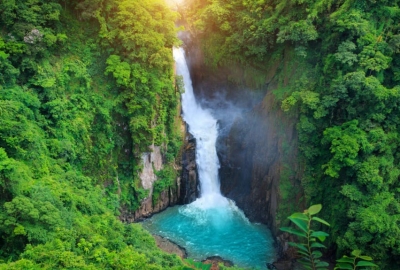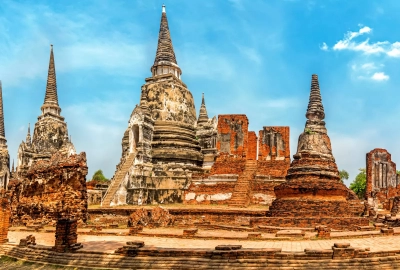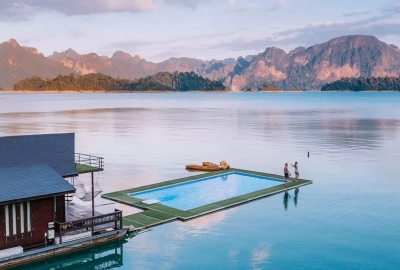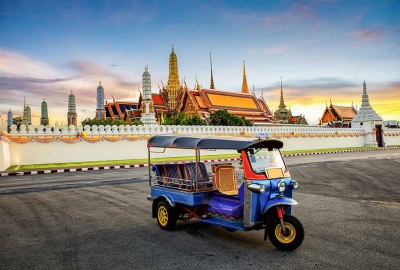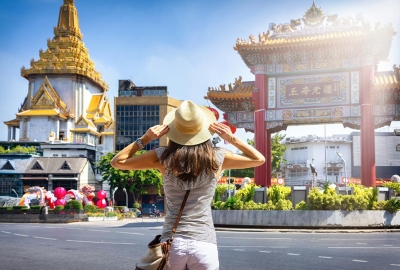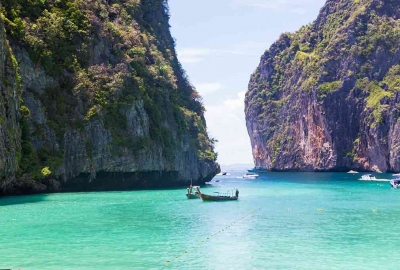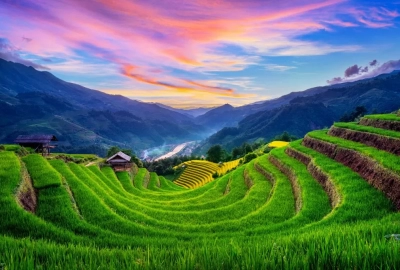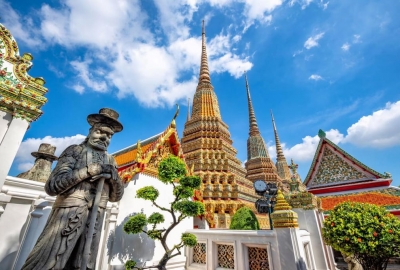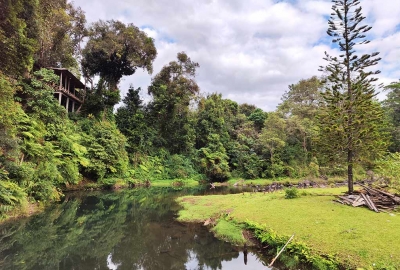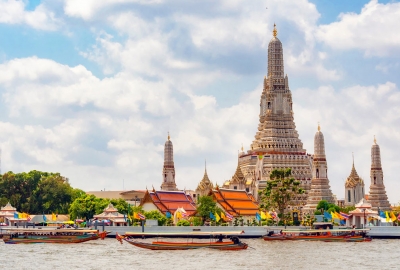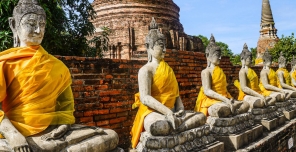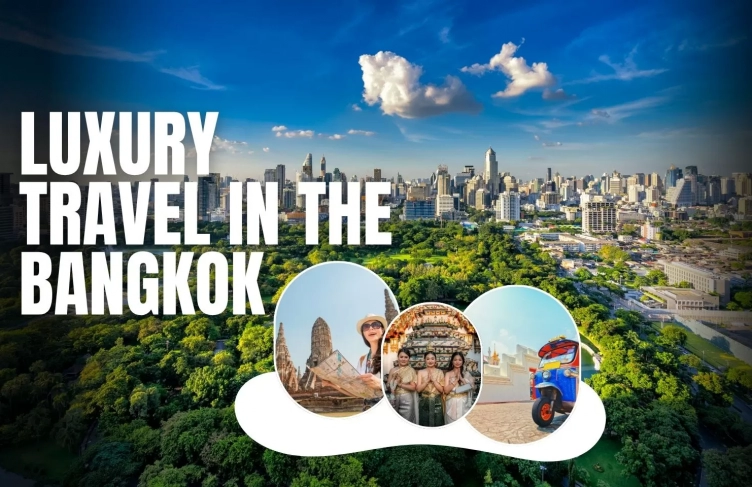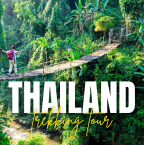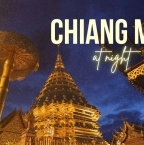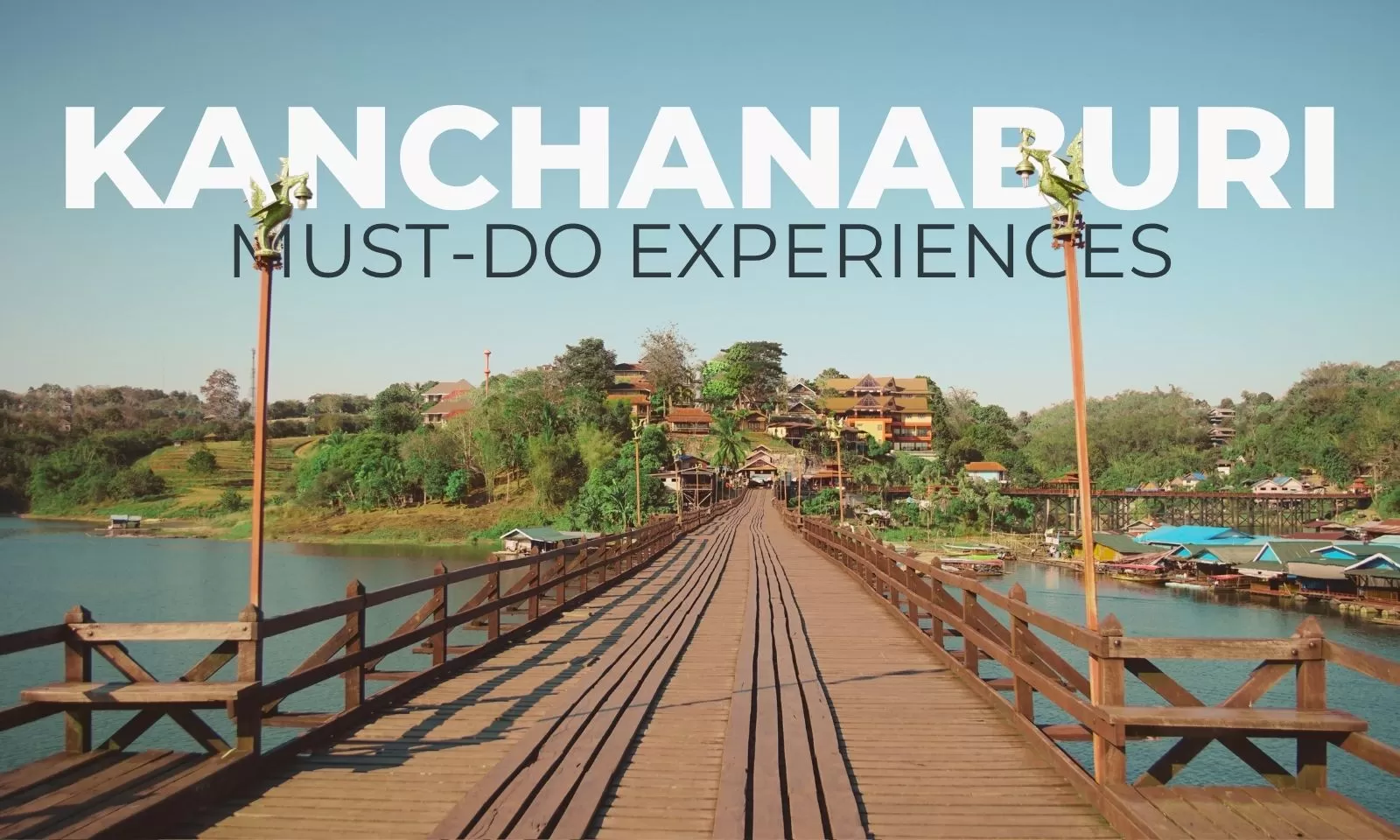
Top 7 experiences in Kanchanaburi you shouldn’t miss

For travelers seeking a destination that combines history, culture and natural serenity, Kanchanaburi is a rewarding choice and a perfect addition to any Thailand holiday. From poignant wartime landmarks to scenic riverside lodges and eco-adventures in Erawan National Park, this province offers diverse experiences that speak to both the mind and soul.
In this guide, you’ll find the best experiences in Kanchanaburi — including iconic sights, suggested activities and essential travel tips. Whether you're planning a custom tour or exploring independently, let this article be your trusted companion for discovering Kanchanaburi at its best.
Table of Contents
Kanchanaburi: A riverside gem in Western Thailand
Tucked away in western Thailand, Kanchanaburi is a province where history and nature blend seamlessly. Known primarily for its World War II heritage — most notably the Bridge over the River Kwai and the Death Railway — the region also captivates visitors with lush national parks, cascading waterfalls, dramatic caves and peaceful riverside scenery.
Beyond its famous landmarks, Kanchanaburi charms travelers with a relaxed vibe and a vibrant food scene. Local dishes such as spicy jungle curry, grilled river prawns and comforting noodle soups reflect the area’s rustic flavors. Whether you’re here to reflect on history, hike through pristine nature or sample local flavors, Kanchanaburi promises an experience rich in contrasts and rewards.
Top 7 unforgettable experiences in Kanchanaburi
Whether it’s tracing echoes of the past, marveling at nature’s beauty, or finding quiet moments in hillside temples, these top experiences reveal the many sides of Kanchanaburi. Each stop on this list offers a unique lens into the province’s character — rewarding travelers with depth, contrast and lasting impressions.
Walk across the Bridge over the River Kwai
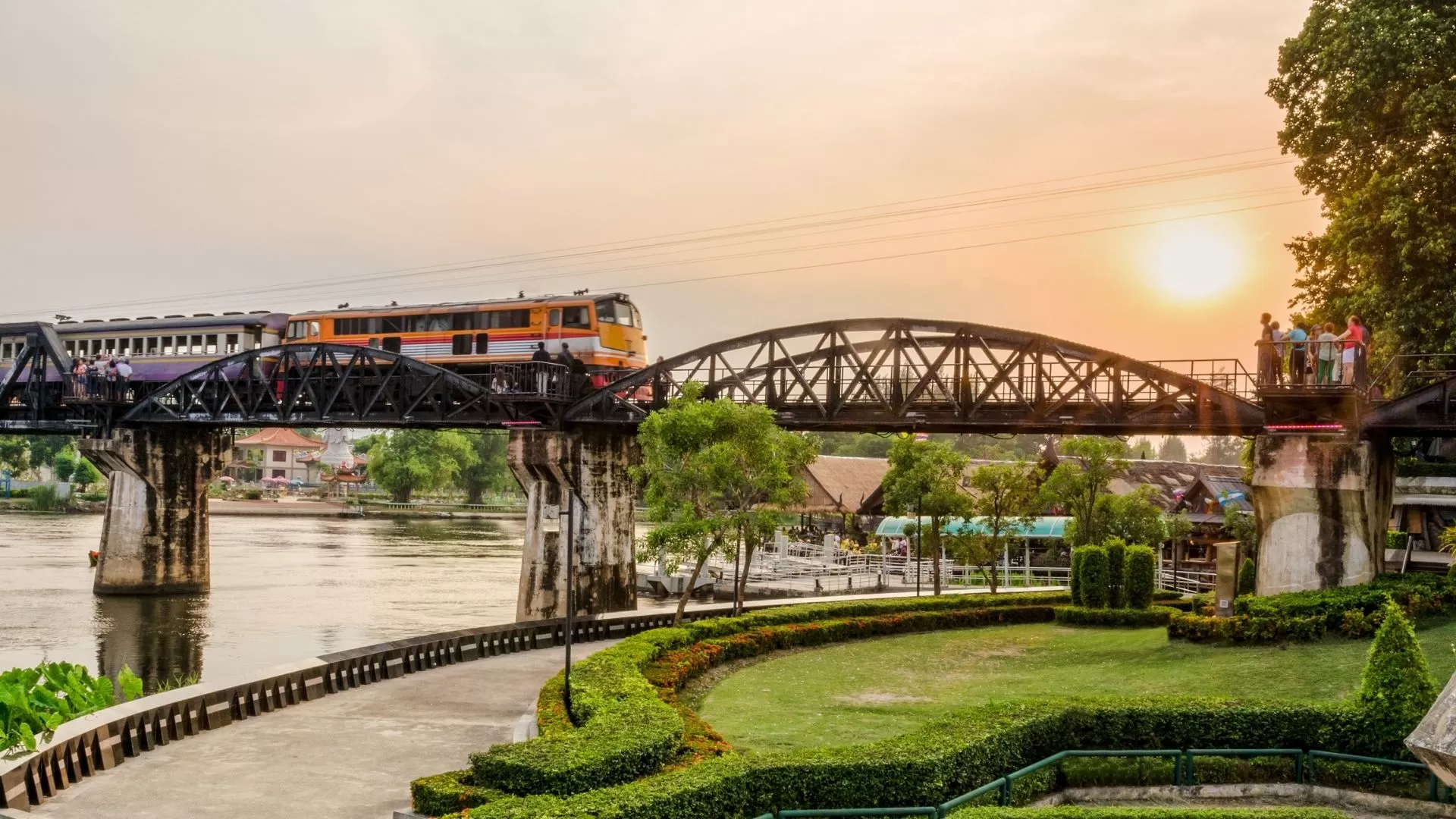
A symbol of resilience and remembrance, the Bridge over the River Kwai is Kanchanaburi’s most recognized landmark. Originally constructed by Allied prisoners of war during World War II under grueling conditions, the bridge was part of the Death Railway connecting Thailand to Myanmar.
Today, visitors can walk across the restored steel span, which still operates for daily tourist trains, offering a unique way to experience the area’s history. The view of the river and the surrounding forested hills is peaceful — in stark contrast to the painful history behind it.
Don’t miss the chance to ride a section of the old railway. Trains depart from Kanchanaburi station and cross the bridge, continuing through scenic rural landscapes. Around the bridge, you’ll find local vendors selling souvenirs, drinks and snacks and small museums that add context to what you see. Aim to visit early in the morning or late afternoon for cooler weather and fewer crowds.
Learn about history at Hellfire Pass
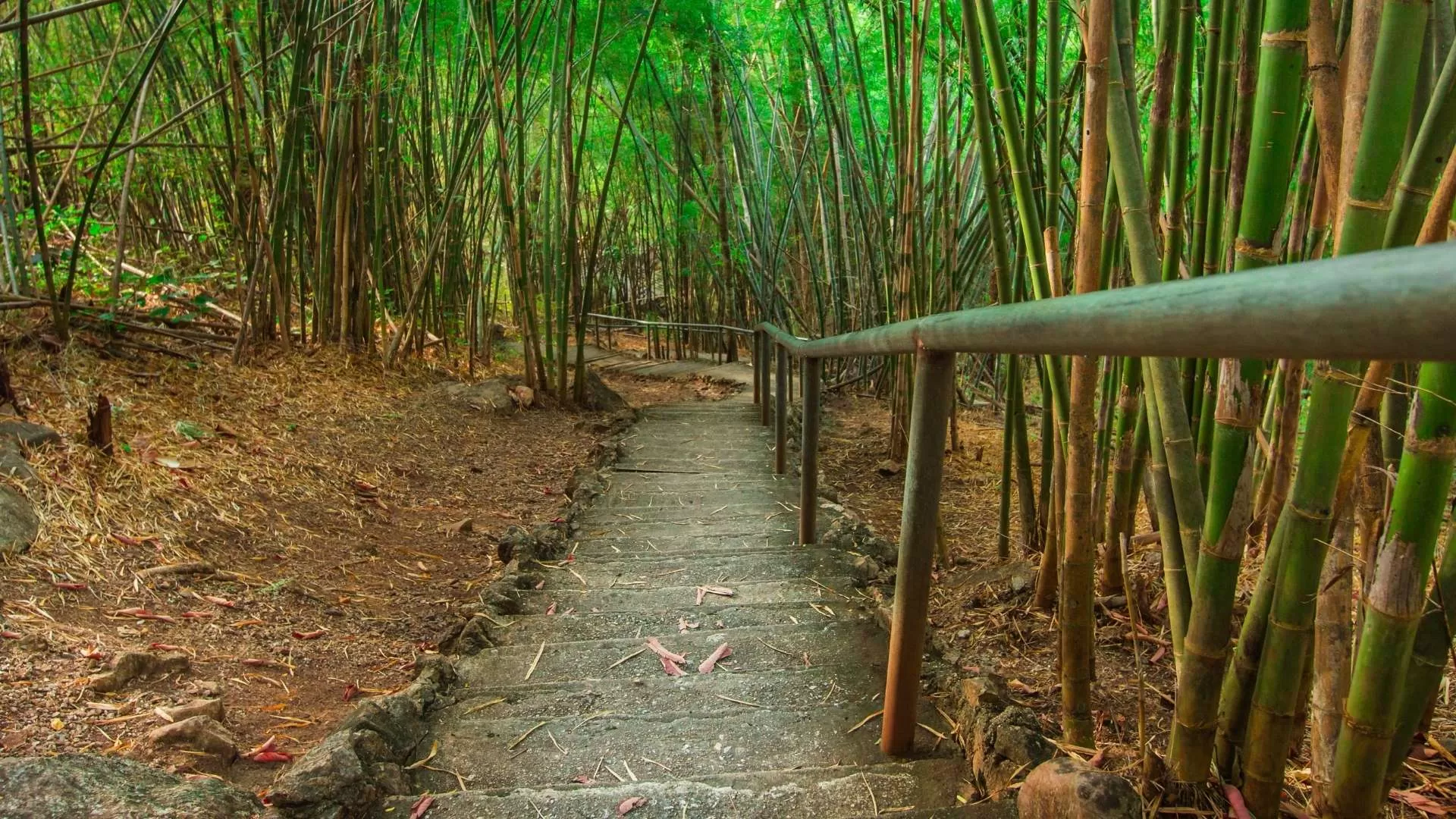
Hellfire Pass is an emotionally powerful memorial site that offers deep insight into the human cost of war. Located about an hour’s drive from Kanchanaburi town, this mountain pass was carved out by prisoners of war using basic tools — a harrowing task completed under extreme physical duress. The name “Hellfire Pass” comes from the sight of laborers working by torchlight at night, casting eerie shadows against the stone walls.
The Hellfire Pass Memorial Museum is a must-visit before you descend into the pass itself. It features personal diaries, letters, historical photographs and video interviews with survivors, offering a human perspective on this dark chapter. From there, a well-marked walking trail (about 4 km roundtrip) takes you through the original railway cutting. An audio guide, available in multiple languages, enhances the experience by narrating true stories at key points.
Visit the Death Railway Museum
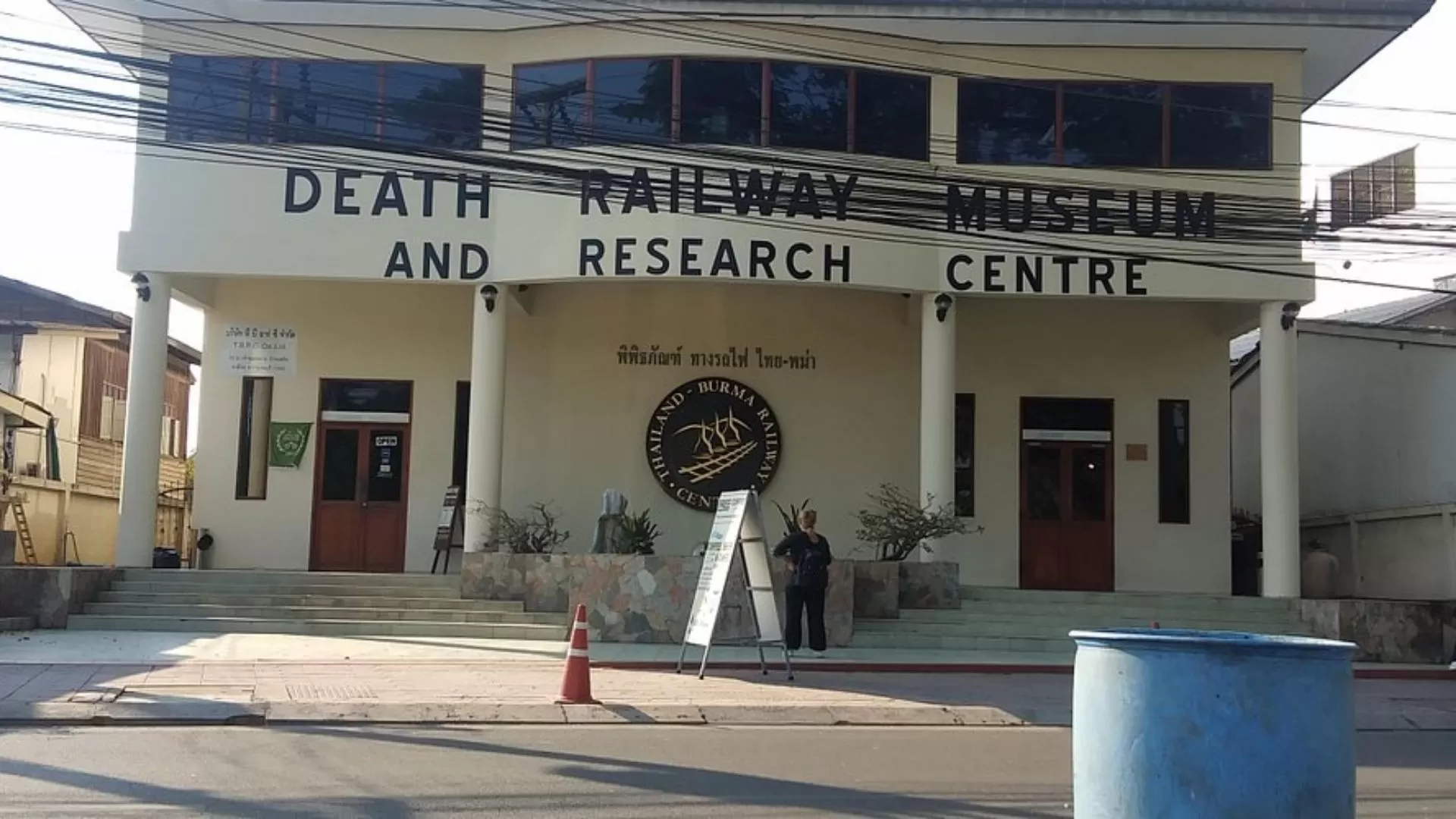
Also called the Thailand–Burma Railway Centre, this museum is located next to the Kanchanaburi War Cemetery and serves as an essential stop for anyone wanting a deeper understanding of the region’s war history. The museum presents a well-researched and accessible narrative of the events leading up to and during the construction of the Death Railway.
Interactive exhibits, 3D models, life-size reconstructions and archival footage provide context on the strategies of the Japanese Imperial Army, the living conditions of POWs and the long-term consequences of the project. Unlike many museums that only skim the surface, this one goes into detail, including stories of survival, resilience and international reconciliation efforts after the war.
Opening hours: 9 a.m – 5 p.m.
Entry fee: 150 THB for both Thais and foreigners.
Explore the Erawan Waterfalls from Kanchanaburi
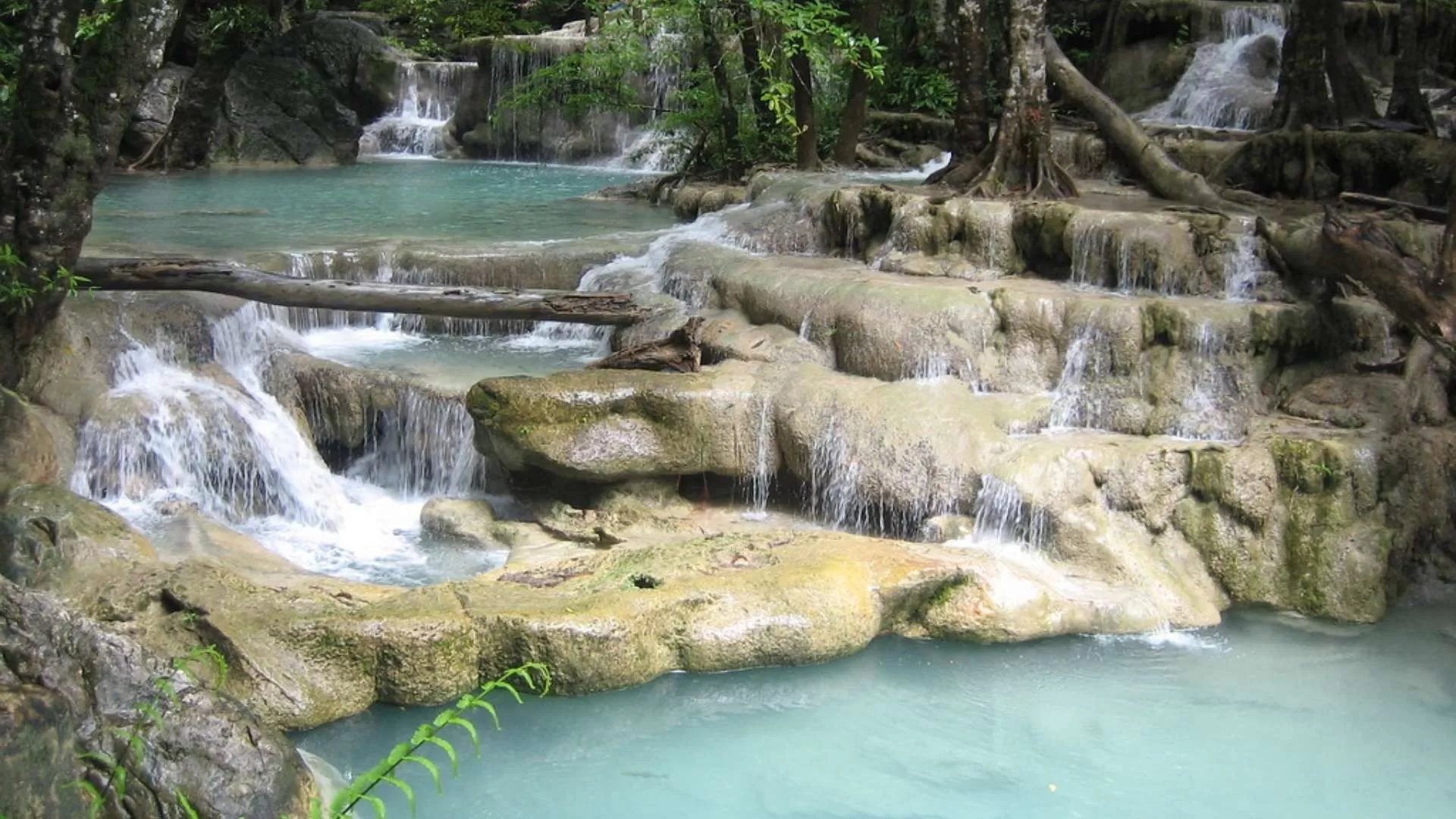
Erawan National Park, located roughly 65 kilometers northwest of Kanchanaburi town, is home to one of Thailand’s most breathtaking natural attractions — the seven-tiered Erawan Waterfalls. Each level features clear emerald pools and unique limestone cascades that are both swimmable and photogenic. The water’s color, a striking turquoise, contrasts beautifully with the surrounding jungle greenery.
The hike to the top tier takes about 1.5 to 2 hours depending on your pace and how long you stop to swim or take photos. While the first few levels are easily accessible via paved paths, higher tiers involve more rugged climbs, so wear suitable footwear.
Essential tips: The park opens daily from 8:00 AM to 4:30 PM. Bring water, swimwear, mosquito repellent and non-slip shoes. Entry fee is around 300 THB for foreigners. Arrive early to avoid crowds, especially on weekends and holidays.
You may want to read: Kanchanaburi 2-day itinerary: A perfect travel guide
Climb through the Dragon’s Mouth at the Dragon Head Cave Temple
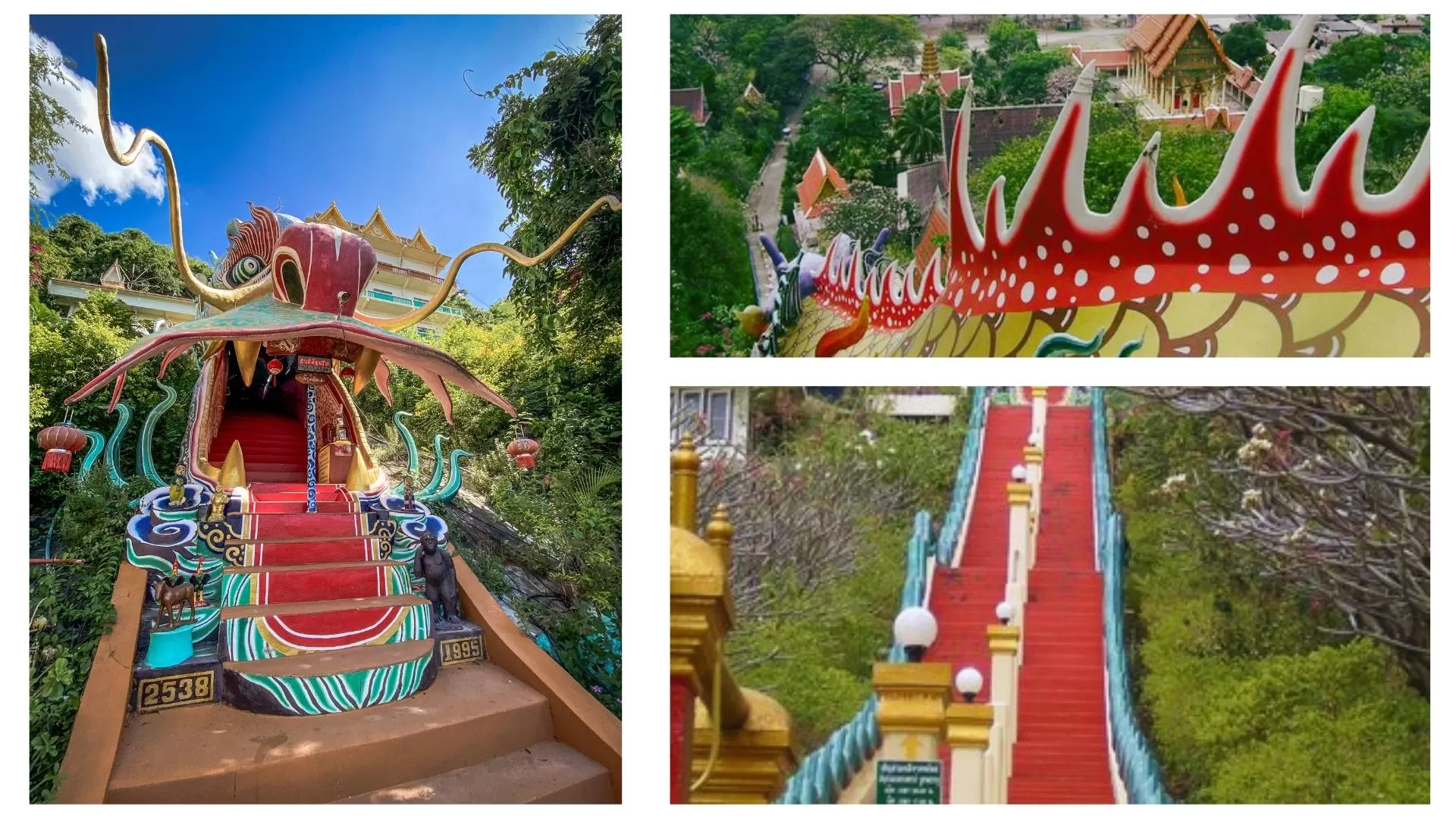
Wat Ban Tham is one of the most unique temples in Kanchanaburi, offering both cultural interest and scenic views. The climb to the temple begins dramatically: visitors ascend a staircase that leads through the open jaws of a massive dragon sculpture. As you pass through its colorful body, the stairs eventually open into a quiet cave shrine filled with candles, incense and golden Buddha statues.
Once inside the cave, cool air and a tranquil atmosphere make it a serene place for reflection. Continuing your climb above the cave, you’ll reach an open-air viewpoint offering panoramic views over the Mae Klong River and the town below — a reward for your effort.
Visit the Tiger Cave Temple
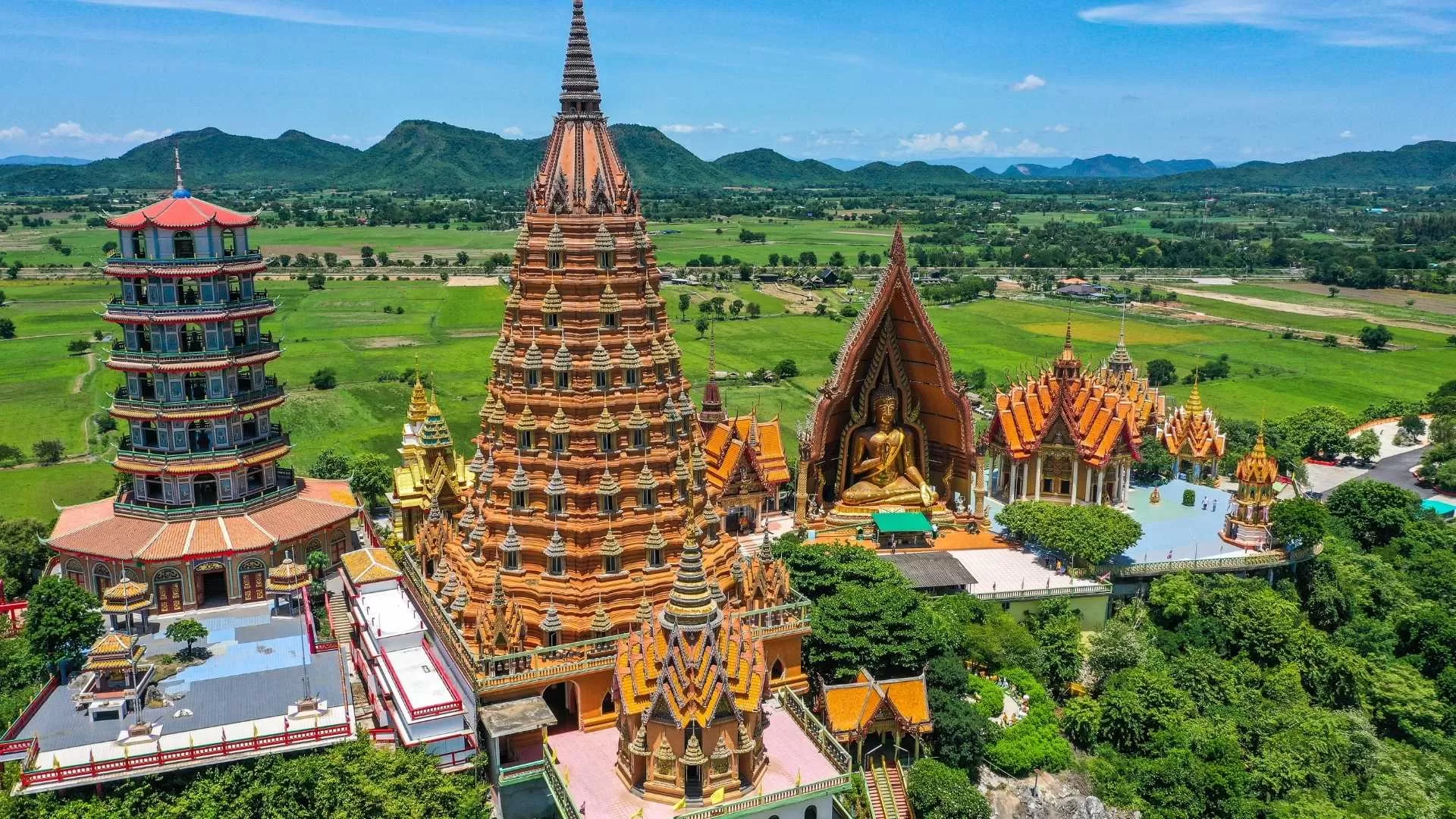
Known locally as Wat Tham Suea, the Tiger Cave Temple is one of Kanchanaburi’s most impressive spiritual landmarks. It sits on a hilltop surrounded by lush fields and limestone peaks. The temple complex features an enormous golden Buddha seated atop the hill, visible from afar, as well as intricate mosaic artwork, traditional pagodas and bell towers.
To reach the summit, you can either climb the 1,237-step staircase — a physical challenge with spiritual rewards — or take a short cable car ride for a fee. From the top, panoramic views of rice paddies and distant mountains stretch in every direction, offering a stunning backdrop for photos or quiet reflection.
Explore the Night Market of Kanchanaburi
As evening falls, the Kanchanaburi Night Market becomes a lively gathering place for locals and travelers alike. Located near the central train station, this market offers a low-key, authentic experience without the touristy bustle of larger Thai cities. The atmosphere is friendly and prices are local-friendly.
Street food is the main draw: try grilled skewers, freshly made pad Thai, spicy papaya salad (som tam), mango sticky rice and refreshing fruit shakes. Vendors also sell handmade crafts, vintage clothes and souvenirs — perfect for a bit of shopping after dinner.
Ready to experience Kanchanaburi for yourself? Consider a personalized journey curated by Hanoi Voyages that brings you face-to-face with the region’s war history, natural beauty and cultural gems—seamlessly woven into an unforgettable Thailand tour.
|
Travel tips for your Kanchanaburi adventure
To make the most of your experiences in Kanchanaburi, a bit of planning goes a long way. Here are some essential travel tips to keep your trip smooth, enjoyable and hassle-free:
Getting there: Kanchanaburi is easily accessible from Bangkok by train, bus, or private transfer. The scenic train ride from Thonburi Station is a popular choice, especially for history lovers. Buses and minivans from Bangkok’s Southern Bus Terminal offer more frequent departures and faster travel times.
Best time to visit: The ideal time to explore is between November and February, when the weather is cool and dry — perfect for outdoor adventures and temple visits. The waterfalls are most impressive during or right after the rainy season (June to October), though trails may be slippery.
What to pack: Lightweight clothes, sunscreen, insect repellent and a refillable water bottle are must-haves. If you plan to visit temples or climb to viewpoints, pack good walking shoes and modest clothing (shoulders and knees covered).
Local transportation: Rent a motorbike for freedom to explore at your own pace, or hire a songthaew (shared pickup truck taxi) for nearby trips. For longer distances, private car hire with a driver is convenient and affordable, especially if traveling in a group.
Respect local culture: Always remove your shoes before entering temples, speak politely and avoid touching monks (especially if you’re a woman). A few basic Thai phrases like “Sawasdee” (hello) and “Khop khun” (thank you) will be warmly appreciated.
From poignant wartime sites to peaceful riverside retreats and lush jungle escapes, the experiences in Kanchanaburi reveal a destination layered with depth, diversity and quiet beauty. Whether you're walking the Death Railway, swimming at Erawan Falls, or uncovering hidden gems in Kanchanaburi like temple caves and scenic hilltop shrines, this province offers some of the best experiences in Kanchanaburi for every kind of traveler.
Let Hanoi Voyages help you turn these things to do in Kanchanaburi into a memorable journey — with custom tours and expert planning tailored to your style.
Dream about your trip to Asia, in private
We are here to make it happen with youFREE QUOTE, WITHOUT OBLIGATION






